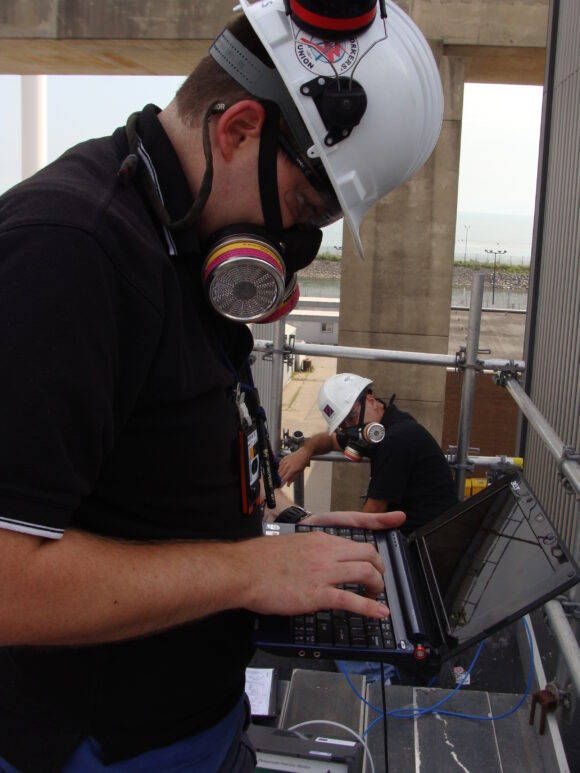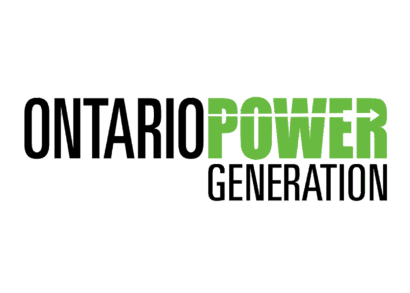Stack Monitor Commissioning & Testing Overview

Ventilation systems at nuclear facilities are monitored to ensure the public is protected from unanticipated releases or emissions that exceed regulatory requirements. Stack monitoring helps the station demonstrate that it is maintaining regulatory compliance in accordance with its license and can be used as a diagnostic tool for identifying adverse station conditions. Typical monitoring can include monitoring for tritium, carbon-14, iodine, noble gases, and particulates.
Stack monitoring takes place in line with the exhaust flow of the stack through sampling probes which often use long runs of tubing to transfer the effluent to the analytical equipment. Typically, a small percentage of the exhausted air stream is sampled, and the results are extrapolated. These conditions can cause line loss, poor sampling characteristics, as well as measurement uncertainty.
Our stack monitor commissioning and Quality Assurance service includes everything needed to establish that your monitoring system is providing reliable, accurate results including the establishment of correction factors through line loss determination.
Why Our Stack Monitor Commissioning & Testing?
-
Comprehensive Testing
Stack exhaust and stack monitor flow verification, concentration profiles, and line loss determination/sampling efficiency provide all the information needed to calculate emissions.
-
Higher Resolution Capabilities
We use multi-point verification of stack exhaust flow at higher resolution and accuracy than typical. Permanently installed, velocity probes ensure the quality of the exhaust flow data.
-
Gain the Confidence of your Regulator
Our extensive experience in verifying and calibrating emissions data will help your regulator become confident in the results.
-
Quality Advice
The advice we give on how to get the best performance and most reliable results from your monitoring system is backed by our experience.
Our Stack Monitor Commissioning & Testing Technical Abilities
Comprehensive Stack Monitoring Services
Stack Monitor Commissioning and Quality Assurance Testing
Stack emission monitor quality assurance and line testing is performed to ensure the system is effectively capturing and monitoring emissions from the facility. The testing also provides correction factors for line losses and flow irregularities. This is performed both during commissioning and on a regular frequency during operation as preventative maintenance.
Line Loss Determination and Sample Efficiency
The sampling efficiency of a stack monitoring system is determined by measuring the recoveries of various test reagents. Non-radioactive chemicals are injected into the ventilation system and samples of the chemicals are collected at the stack monitor. To determine the sample collection efficiency, the measured yield on the collection medium is compared to the theoretical yield, based on the mass of chemical injected and the dilution ratio of monitor flow to stack flow.
Stack Exhaust Flow Verification
Stack exhaust flow is calculated from the mean of several velocity measurement traverses at equal areas in a given exhaust stack. Velocities are measured using turbine velocity meters placed at designated positions within the stack. The flow is calculated from the cross-sectional area and then compared to the reference flow used by the facility to calculate their exhaust emissions.
Stack exhaust flow is a large component of the emission calculation and differences from the reported flow are corrected in order to achieve accurate emissions reporting.
Stack Monitor Flow
Stack monitor flow, air temperature, and pressure are measured directly by installing a calibrated mass flow meter in line with the stack monitor flow-metering device. These monitoring system parameters are measured and then compared against the flow metering device on the stack monitor. Stack monitor flow is another large component of the emission calculation and differences from the reported flow are corrected in order to achieve accurate emissions reporting.
Concentration Profile Testing
Sulfur hexafluoride (SF6) is used as a tracer to help determine system mixing and provide a concentration profile for the exhaust stack. SF6, an inert gas, is injected a long way upstream of the measuring location and allowed to mix. Its concentration in the duct is measured at equal areas and then compared against readings taken in the duct. The data provides insights on sample mixing in the exhaust stream as well as determining which type of sample probe is appropriate.
Our Proven Experience
Quality Assurance & Technical Standards
- CSA N288.5-11 (2016)
- Effluent Monitoring Programs at Class I Nuclear Facilities and Uranium Mines and Mills











